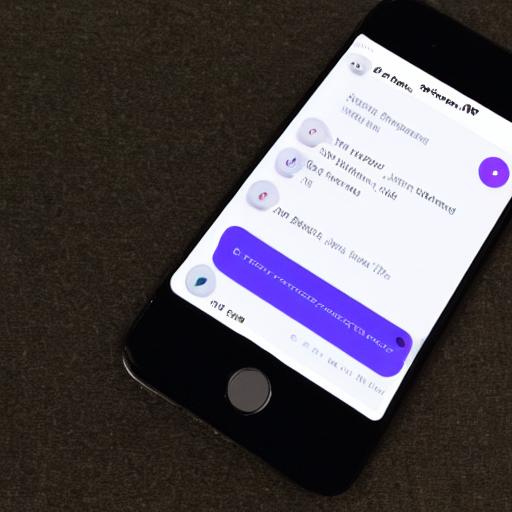Last week, OpenAI released a ChatGPT early demo, and the conversational chatbot quickly gained popularity on social media.
People used social media to share examples of ChatGPT’s many capabilities, which range from casual conversation to essay writing and coding, and within five days the chatbot had amassed over one million users.
It was developed by an artificial intelligence company that was previously backed by some of Silicon Valley’s biggest names and is now supported by Microsoft.
OpenAI was founded in 2015 by Sam Altman, a former president of Y Combinator, and Elon Musk. In 2015, Musk, Altman, and other prominent Silicon Valley figures such as Peter Thiel and LinkedIn cofounder Reid Hoffman promised $1 billion for the project.
According to a statement on OpenAI’s website from December 11, 2015, the group sought to establish a nonprofit dedicated to developing artificial intelligence “in the manner that is most likely to benefit humanity as a whole.”
At the time, Musk referred to AI as humanity’s biggest existential threat. Musk is not the only person to warn about the dangers that AI may pose. In 2014 Stephen Hawking issued a dire warning about the potential extinction of humanity.
A statement announcing the creation of Open AI reads, It’s hard to fathom how much human-level AI could benefit society, and it’s equally hard to imagine how much it could damage society if built or used incorrectly.
The company OpenAI released two products over the ensuing year.
Gym, a platform that allowed researchers to create and contrast reinforcement learning systems, was introduced by the company in 2016. These platforms train AI to make choices that will yield the highest overall rewards.
Universe, a toolkit for training intelligent agents across websites and gaming platforms, was also released by OpenAI later that same year.
Three years after assisting in the company’s founding, Musk left the board of directors of OpenAI in 2018.
The company claimed in a 2018 blog post that the Tesla CEO resigned due to the automaker’s emphasis on AI in order to eliminate potential future conflict. The business also stated that Musk would keep making donations to the nonprofit.
For years, Musk had been discussing his plans to make electric cars autonomous with Tesla investors.
Later, Musk claimed that he left the company because “some of what [the] OpenAI team wanted to do” didn’t sit well with him.
Adding that he hadn’t been involved with the business for over a year, the billionaire claimed on Twitter in 2019 that Tesla and OpenAI were vying for some of the same employees.
Add it all up, and he concluded that it was preferable to part ways amicably.
Musk has remained critical of OpenAI in recent years. Musk stated on Twitter in 2020 that his confidence in the company was “not high” in terms of safety. OpenAI should be more open in his opinion, he tweeted in response to MIT Technology Review’s investigation into the company.
According to the publication, an investigation into OpenAI revealed a culture of secrecy that contradicted the nonprofit’s ostensible commitment to transparency.
Musk recently stated that OpenAI’s access to Twitter’s database for training purposes has been halted.
On Sunday, he posted on Twitter, Need to understand more about governance structure & revenue plans going forward. OpenAI started out as an open-source, non-profit project. Both no longer hold true.
The business created an AI tool in 2019 that could fabricate news stories.
OpenAI initially claimed that they decided not to release the bot because it was so adept at creating false news. Later that year, the business released GPT-2, a new iteration of the AI tool.
In 2020, the company unveiled GPT-3, another chatbot.
In the same year, OpenAI lost its nonprofit designation.
In a blog post, the business declared that it was now a “capped profit” corporation.
No pre-existing legal structure that they are aware of strikes the right balance between increasing their ability to raise capital and continuing to carry out their mission, the company claimed. Their approach is to establish OpenAI LP as a for-profit/nonprofit hybrid company, which they are referring to as a ‘capped-profit’ company.
Investors in OpenAI could make up to 100 times their initial investment under the new profit structure, but nothing more. The remaining funds would be used for charitable endeavors.
At the end of 2019, OpenAI declared a partnership with Microsoft.
Microsoft made a $1 billion investment in the AI startup, and OpenAI announced that it would exclusively license its technology to Microsoft.
Microsoft stated in a blog post that the GPT-3 model has profound commercial and creative potential, with genuinely novel capabilities, the majority of which they haven’t even considered yet.
The possibilities are limited only by the ideas and scenarios that they bring to the table, it said. Directly assisting human creativity and ingenuity in areas like writing and composition, describing and summarizing large blocks of long-form data (including code), converting natural language to another language.
Microsoft can now compete with Google’s DeepMind AI business thanks to the partnership.
The business released an AI-art generator the previous year.
Based on descriptions of the images, the AI system Dall-E can produce realistic images and even original artwork.
In November, the business released a new version of the software.
Although OpenAI’s chatbot has become increasingly popular over the past week, an updated version of the program might be made available as early as next year.
The demo chatbot for OpenAI’s GPT-3.5 was made available on November 30. Next, the business intends to release a complete GPT-4.
Musk is still making comments in the meantime.
In response to a comment made by Altman, Musk tweeted, We are not far from dangerously strong AI.
He referred to ChatGPT as “scary good.”









